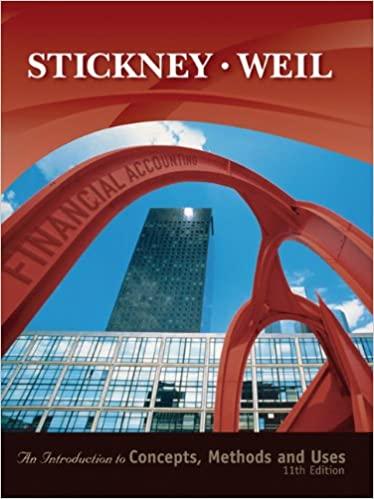Calculating and interpreting profitability and risk ratios in a time series setting. Target Corporation operates retails chains
Question:
Calculating and interpreting profitability and risk ratios in a time series setting. Target Corporation operates retails chains under two store concepts:
(1) Target and Target Superstores: Target stores offer a wide variety of clothing, household, electronics, sports, toys, and entertainment products at discount prices. Target stores attempt to differentiate themselves from Wal-Mart's discount stores by pushing trend merchandising with more brand name products. Target emphasizes customer service, referring to its customers as "guests" and focusing on the theme of "Expect More. Pay Less." Target Corporation attempts to differentiate itself from competitors by providing wide aisles and a less cluttered store appearance. The recent addition of Target Superstores represents Target Corporation's effort to compete directly with Wal-Mart's superstores.
(2) Mervyn's and Marshall Field's: Mervyn's and Marshall Field's are department stores offering higher quality, brand name products at higher price points than discount stores.
Each of Target Corporation's retail chains offers its own credit card. Target Corporation grew its number of stores from 1,381 at the end of Year 12 to 1,553 at the end of Year 14. The growth rate in sales of stores open at least two full years was 2.9 percent in Year 12. 1.1 percent in Year 13, and 2.7 percent in Year 14. The U.S. economy was in a recession of a large portion of this three-year period. Exhibit 5.21 presents segment profitability information for Target Corporation's three retail chains. The financial statements for Target Corporation for Year 12, Year 13. and Year 14 appear in Exhibit 5.22 (balance sheet). Exhibit 5.23 (income statement), and Exhibit 5.24 (statement of cash flows). Exhibit 5.25 presents financial statement ratios forTargel Corporation for Year 12 and Year 13.
a. Compute the amounts of the ratios listed in Exhibit 5.25 for Year 14. The income tax rate applicable to interest expense deductions is 35 percent.
b. What are the likely reasons for the changes in Target Corporation's rate of return on assets during the three-year period? Analyze the financial ratios to the maximum depth possible.
C. What are the likely reasons for the changes in Target Corporation's rate of return on common shareholders' equity during the three-year period?
d. How has the short-term liquidity risk of Target Corporation changed during the three-year period?
e. How has the long-term liquidity risk of Target Corporation changed during the three-year period?
Step by Step Answer:

Financial Accounting Introduction To Concepts Methods And Uses
ISBN: 9780324222975
11th Edition
Authors: Clyde P. Stickney, Roman L. Weil





